The Monstera Deliciosa, often called the Swiss Cheese Plant, is a tropical gem that elevates any space with its lush, perforated leaves. Beyond its stunning look, this plant holds profound Feng Shui significance, fostering prosperity and balance.
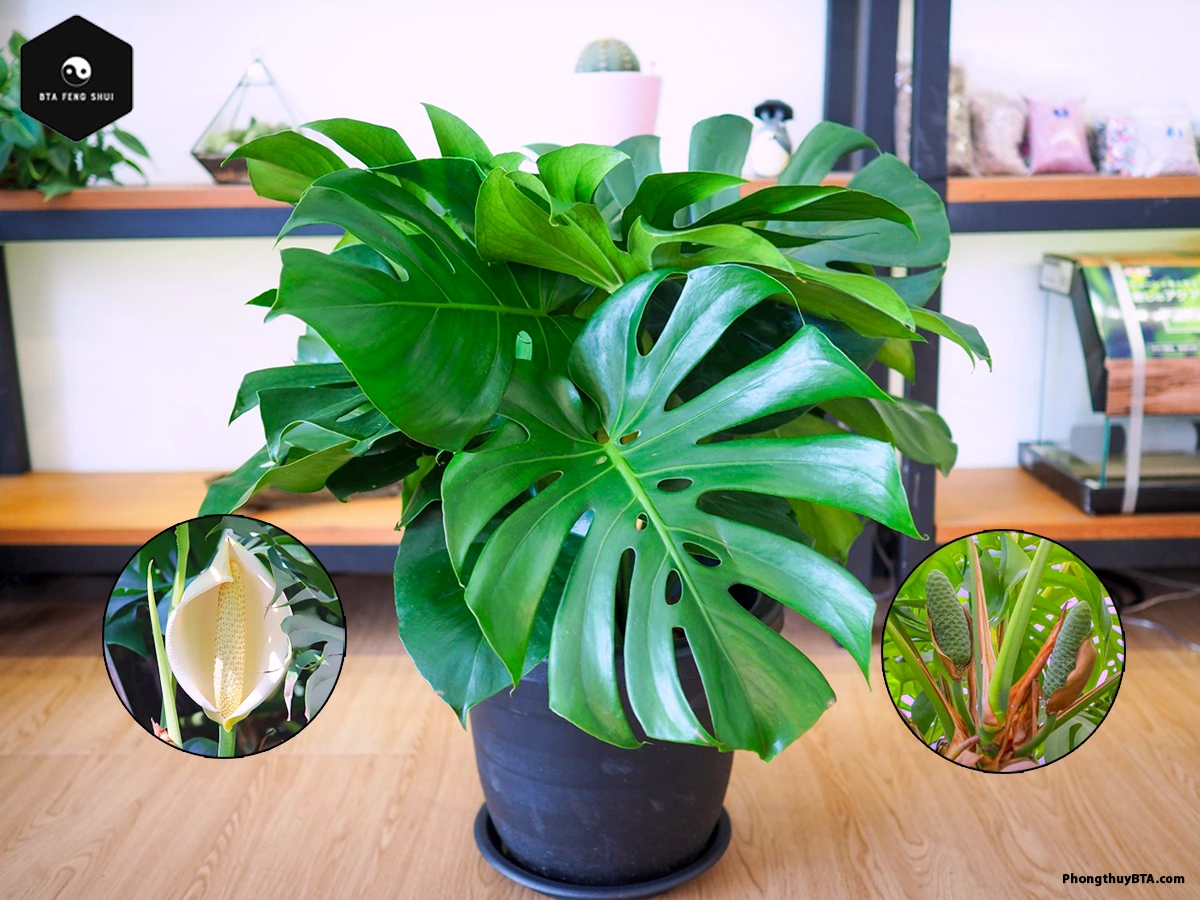
In this guide, BTA Feng Shui explores how to care for your Monstera, unlock its spiritual benefits, and apply expert tips to help it thrive—turning your home into a haven of positive energy.
Unveiling the Monstera Deliciosa: A Tropical Marvel
The Monstera Deliciosa is a beloved houseplant, admired for its dramatic foliage and vibrant energy. Below is a comprehensive overview of its characteristics and why it’s a must-have for plant lovers and Feng Shui enthusiasts.
- Common Names: Swiss Cheese Plant, Split-Leaf Philodendron, Windowleaf, Ceriman.
- Scientific Name: Monstera Deliciosa (Family: Araceae).
- Origin: Rainforests of Central & South America.
- Appearance: Large, heart-shaped leaves with natural holes (fenestrations); climbing vine with aerial roots.
- Growth Rate: Fast-growing, adding 1–2 feet annually under ideal conditions, reaching 3–15 feet tall and 3–8 feet wide indoors.
- Unique Traits: Rare edible fruit in nature; mildly toxic if ingested.
- Varieties: Includes Monstera Albo (variegated white), Monstera Adansonii (smaller leaves with larger holes), and Thai Constellation (creamy speckled leaves).
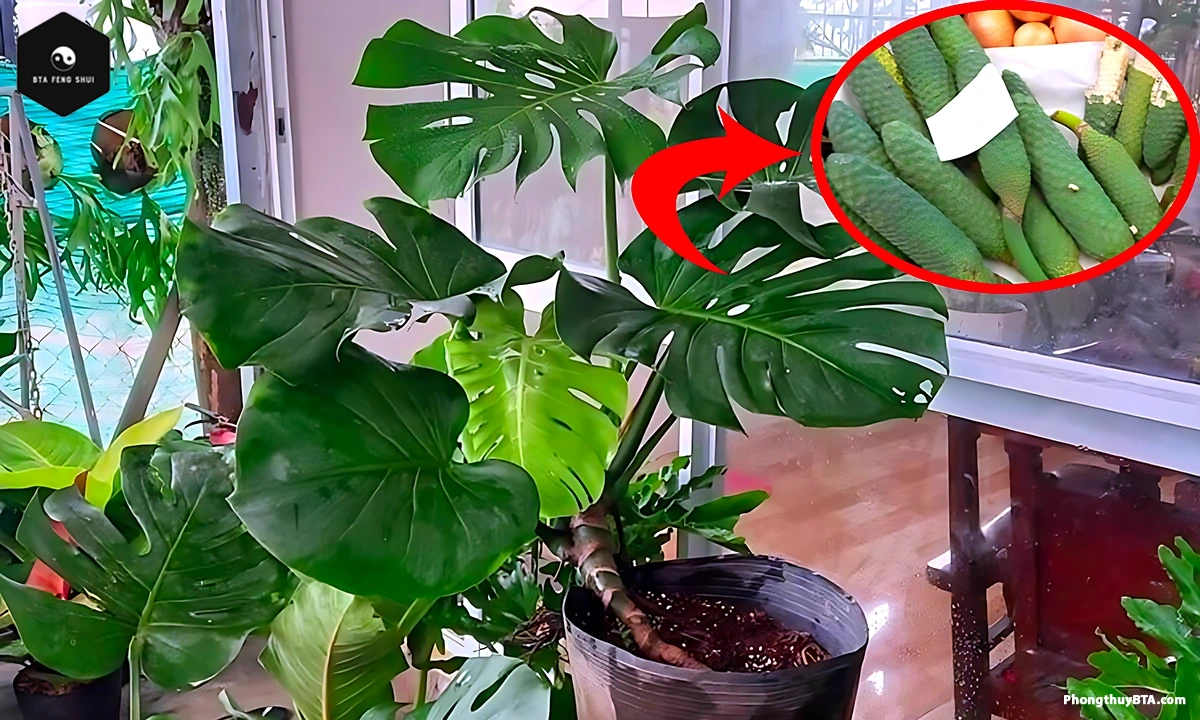
This plant’s bold aesthetic and climbing nature make it a statement piece, while its Feng Shui properties enhance its appeal for creating harmonious spaces.
Why Choose Monstera Deliciosa?
Its iconic leaves add a jungle vibe to interiors, and its adaptability makes it suitable for beginners. The Swiss Cheese Plant thrives indoors with minimal fuss, offering both visual and spiritual benefits.
Feng Shui Significance of Monstera Deliciosa
In Feng Shui, the Monstera Deliciosa is a powerhouse for channeling positive energy (Chi). Its lush green foliage aligns with the Wood element, symbolizing growth, vitality, and renewal. The perforated leaves, resembling a fan, promote balance and disperse stagnant energy, making it ideal for fostering harmony.
Key Feng Shui Benefits
- Prosperity and Wealth: The plant’s upward growth attracts abundance, especially when placed in the Southeast (wealth) sector.
- Balance and Harmony: Its symmetrical leaves symbolize equilibrium, ideal for calming chaotic spaces.
- Resilience: Thriving in varied conditions, it inspires strength and adaptability, particularly for those with Wood-element zodiac signs (e.g., Horse) or natal charts.
- Air Purification: Its air-cleansing properties align with Feng Shui principles of clearing negative Chi, promoting a healthy environment.
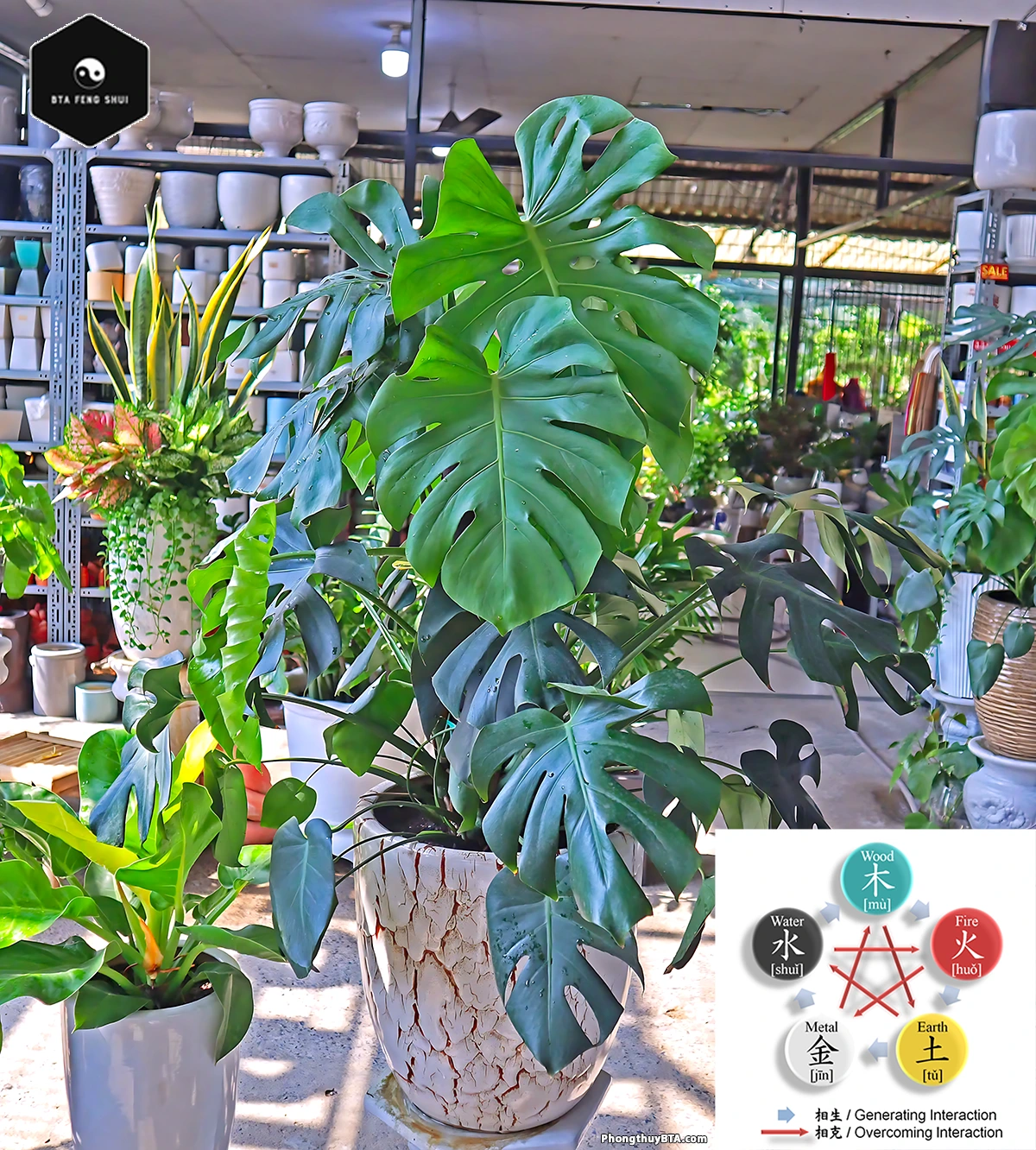
Placement Tips
- East Sector: Enhances health and family unity.
- Southeast Sector: Boosts financial prosperity.
- Avoid Bedrooms: Its strong growth energy may disrupt restful sleep.
- Pair with Water Elements: Combine with a small fountain or blue decor to balance Wood with Water, fostering growth and flow.
How to Care for Monstera Deliciosa: Expert Tips
Caring for a Monstera Deliciosa is straightforward with the right approach. Below are detailed care instructions to ensure your plant thrives and amplifies its Feng Shui benefits.
Propagating Monstera Deliciosa
Propagation is easy via stem cuttings or air layering:
- Stem Cuttings: Cut a stem below a node with an aerial root and at least one leaf. Place in water (change weekly) or moist soil. Roots form in 4–8 weeks. Transplant into a pot once established.
- Air Layering: Wrap a node with moist sphagnum moss, cover with plastic, and secure. After 2–3 months, cut below the new roots and pot the new plant.

Best Soil for Monstera Deliciosa
Use a well-draining, peat-based mix with 3 parts potting soil, 2 parts shredded bark, and 1 part perlite for aeration. Ensure the pot has drainage holes to prevent waterlogging.
Light Requirements
Monstera Deliciosa thrives in bright, indirect light. Place near an east or west-facing window. Avoid direct sunlight to prevent leaf burn. If fenestrations aren’t forming, supplement with a grow light (4000–6000 lumens).
Watering Monstera Deliciosa
Water when the top 2–3 inches of soil are dry, typically every 1–2 weeks. Use filtered water to avoid mineral buildup. In summer, water weekly; in winter, every 2–3 weeks. Overwatering causes root rot, signaled by yellowing leaves.
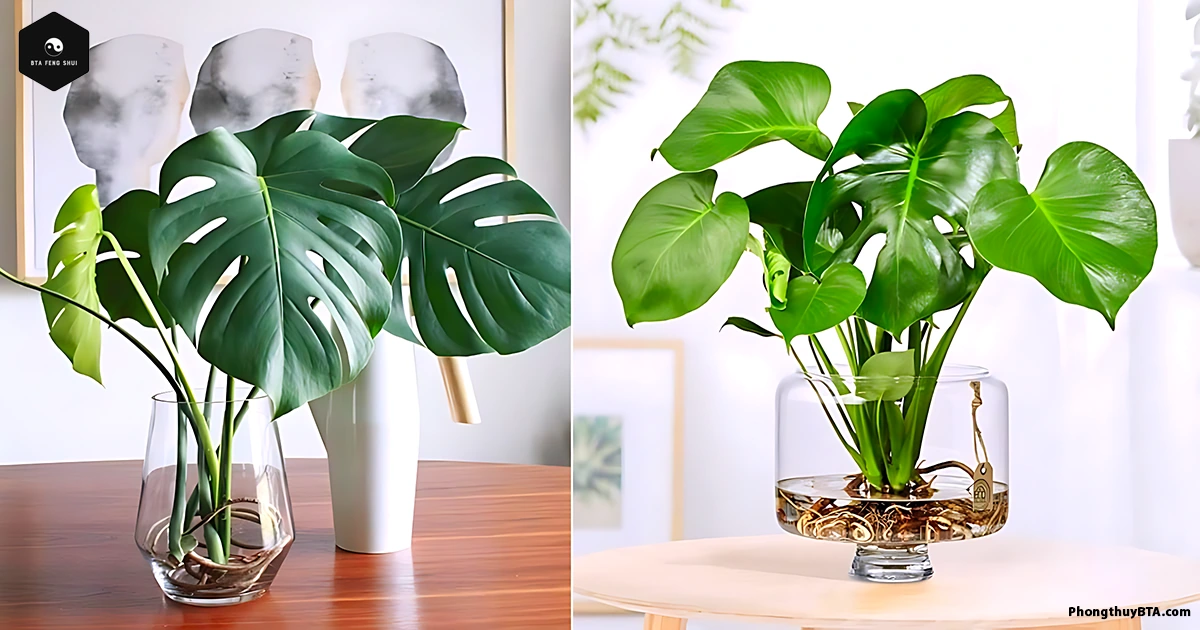
Temperature and Humidity
Maintain temperatures between 65°F–85°F (18°C–30°C) and humidity at 40–60%. Use a humidifier or pebble tray in dry climates. Avoid temperatures below 50°F to prevent growth stunting.
Fertilizing
Apply a balanced liquid fertilizer (1-1-1 or 3-1-2) monthly during spring and summer. Reduce or stop in fall and winter unless using a grow light. Flush soil quarterly to prevent salt buildup.
Pruning
Prune dead or overgrown leaves in spring/summer using clean shears, cutting above a node. This maintains size and encourages new growth. Use cuttings for propagation.
Potting and Repotting
Repot every 1–2 years in spring, choosing a pot 1–2 inches larger in diameter. Use terracotta or ceramic pots for airflow. Secure a moss pole for climbing support to enhance leaf size and Feng Shui energy.
Common Pests and Problems
Pests: Watch for spider mites (webbing, speckled leaves), mealybugs (white fuzzy patches), and fungus gnats. Treat with neem oil or insecticidal soap. Use sticky traps for gnats.
Issues:
- Yellow Leaves: Overwatering; check soil and reduce watering.
- Brown Tips: Underwatering or low humidity; adjust watering or add a humidifier.
- No Fenestrations: Insufficient light; move to a brighter spot.
- Root Rot: Caused by soggy soil; repot in fresh mix and trim affected roots.
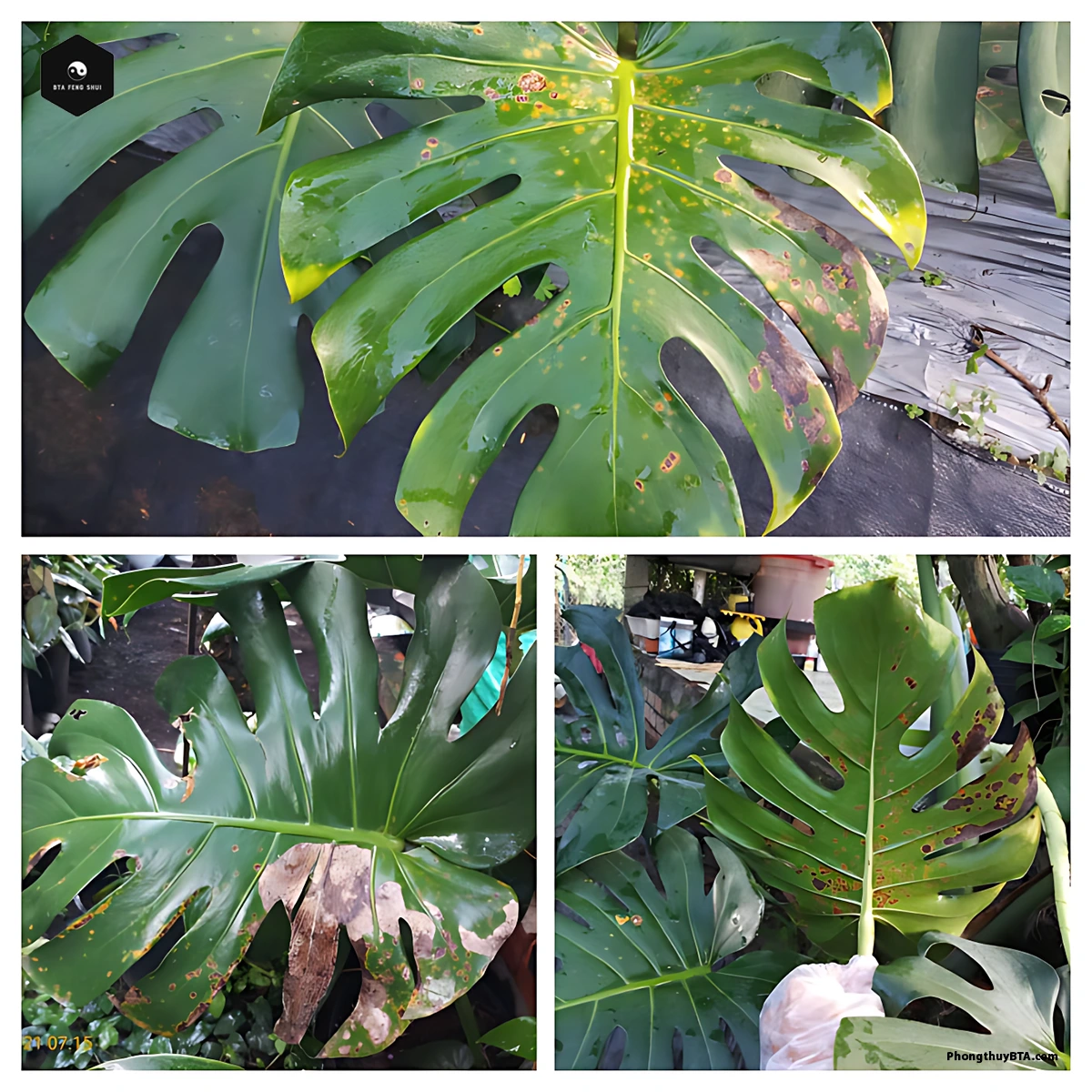
Additional Benefits of Monstera Deliciosa
Beyond Feng Shui, the Swiss Cheese Plant offers practical benefits:
- Air Purification: Absorbs toxins and improves indoor air quality, ideal for offices or urban homes.
- Aesthetic Appeal: Its bold foliage enhances decor, creating a tropical ambiance.
- Stress Reduction: The plant’s green hues and natural beauty promote relaxation and mental clarity.
Read more:
- Philodendron Plant Care: Feng Shui Harmony for Your Home
- Snake Plant Care: Feng Shui Powerhouse for Your Home
Frequently Asked Questions About Monstera Deliciosa
How to Care for Monstera Deliciosa Indoors?
Provide bright, indirect light, water when the top soil is dry, and maintain high humidity. Use a well-draining mix and a moss pole for support.
Why Aren’t My Monstera Leaves Splitting?
Lack of fenestrations often results from insufficient light or an immature plant. Increase light exposure and ensure the plant is at least 2–3 years old.
Is Monstera Deliciosa Toxic?
Yes, it’s toxic to pets and humans if ingested due to calcium oxalate crystals. Keep out of reach and wash hands after handling.
How Big Do Monsteras Get?
Indoors, they can grow 3–15 feet tall and 3–8 feet wide with proper care and support.
What’s the Best Soil for Monstera Deliciosa?
A mix of peat-based soil, shredded bark, and perlite ensures proper drainage and aeration.
How Fast Do Monstera Plants Grow?
They grow 1–2 feet per year under ideal conditions, reaching maturity in about 3 years.
Can Monstera Deliciosa Be Placed Outdoors?
Yes, in summer, place in a shaded area (USDA zones 10–12). Bring indoors if temperatures drop below 60°F.
Monstera Deliciosa combines tropical charm with Feng Shui benefits. With the right care and placement, it brings vitality, prosperity, and harmony to your space. Enjoy its beauty—and don’t forget to rate this guide 5 stars and share it with fellow plant lovers!
























